Project Team
Architect: MHA Works
Building General Contractor: Beverly-Grant, Inc
Roofing Contractor: Baker Roofing
Stormwater Analysis: Robinson Design Engineers
Green Roof Design, Construction, Maintenance: Living Roofs Inc
“Located in downtown Asheville, North Carolina, the green roof at 145 Biltmore Avenue is more than a beautiful, elevated meadow in an urban setting– it is a powerful piece of infrastructure that addresses the local and regional challenges of climate change, including diminished water quality and flooding, urban heat, and biodiversity loss.”
Stormwater Infrastructure as a Wildflower Meadow
The extensive green roof atop the downtown, multi-unit residential building at 145 Biltmore Avenue is more than a decorative element; it's infrastructure. This project sets a new standard of resilience for the future by reimagining stormwater infrastructure with the beauty of a wildflower meadow. The high-density residential project is a downtown infill building on a mostly impervious site previously devoid of vegetation. Although the project maximized the lot's buildable area, the site now has less stormwater runoff than pre-development. The custom dual media green roof system was designed to address the local and regional challenges of climate change, including diminished water quality, urban heat, and loss of biodiversity.
This project sits within a large and significant watershed of the French Broad River that is severely impacted by increased development, piped streams, and aging infrastructure. The green roof serves as a stormwater control measure to meet the city's requirements in its effort to reduce pollutants and flooding affecting the watershed. The green roof also allowed the developer to avoid a costly underground stormwater containment system and use this valuable space for underground parking.
The project site is also located in an area of downtown identified as having the highest heat vulnerability, and this green roof helps to cool air temperatures and reduce the building's contribution to urban heat island effect.
The project plans initially called for a green roof tray system to meet the city's stormwater requirement, but from experience and analysis of previous projects, the green roof company's design studio knew they could create a custom buildup that would be more effective at managing stormwater and deliver cost savings for the project. The custom green roof created more design flexibility to work around rooftop utilities already in place, and also reduced costs associated with planting. The flexibility and lower price tag helped increase the green roof's square footage, saving money in the long term while expanding the green roof's environmental benefits. The system was designed to support a biodiverse meadow and provides a tremendous stormwater benefit that helps reduce the negative impacts of development on existing public infrastructure and surrounding waterways.

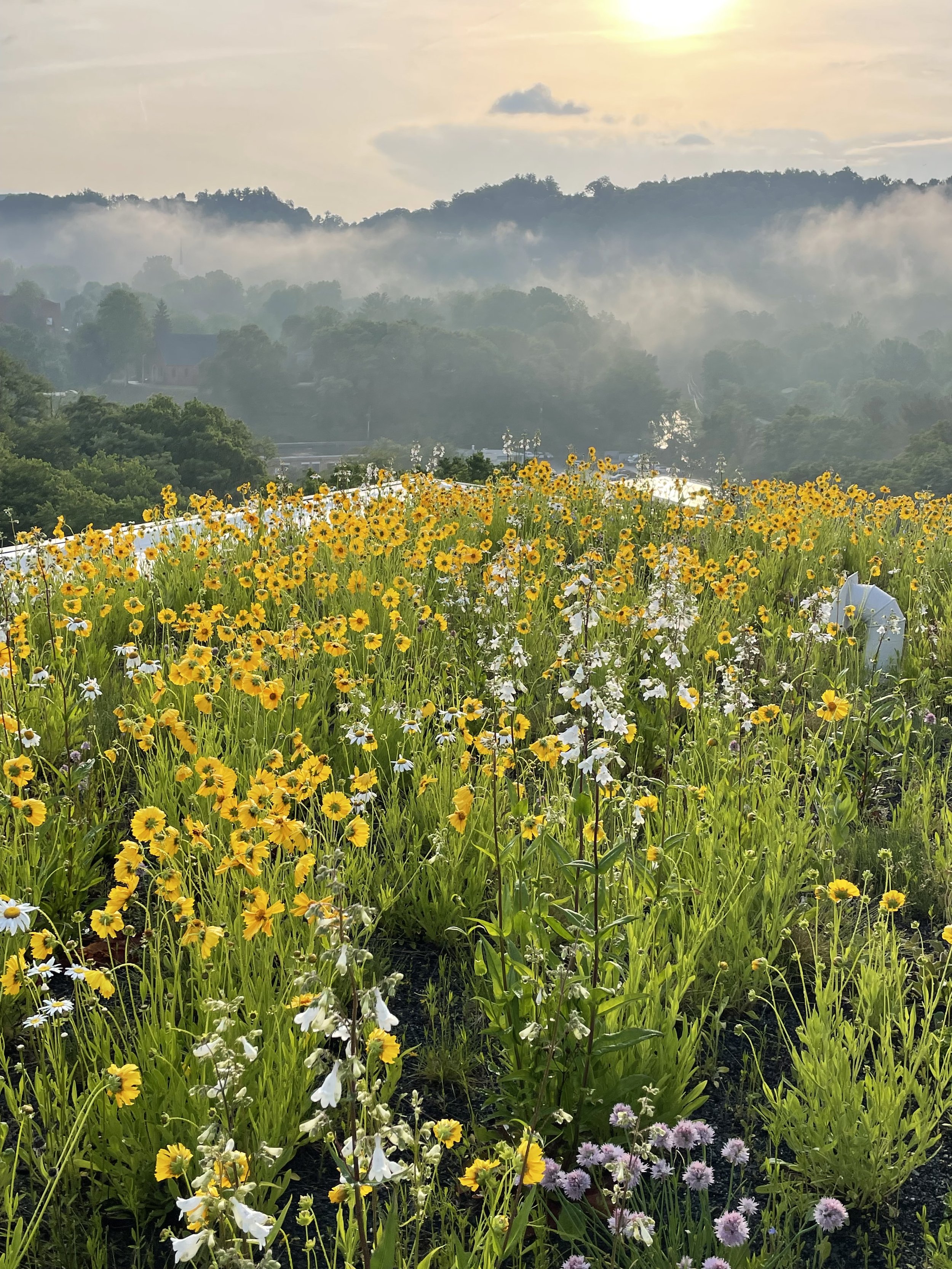
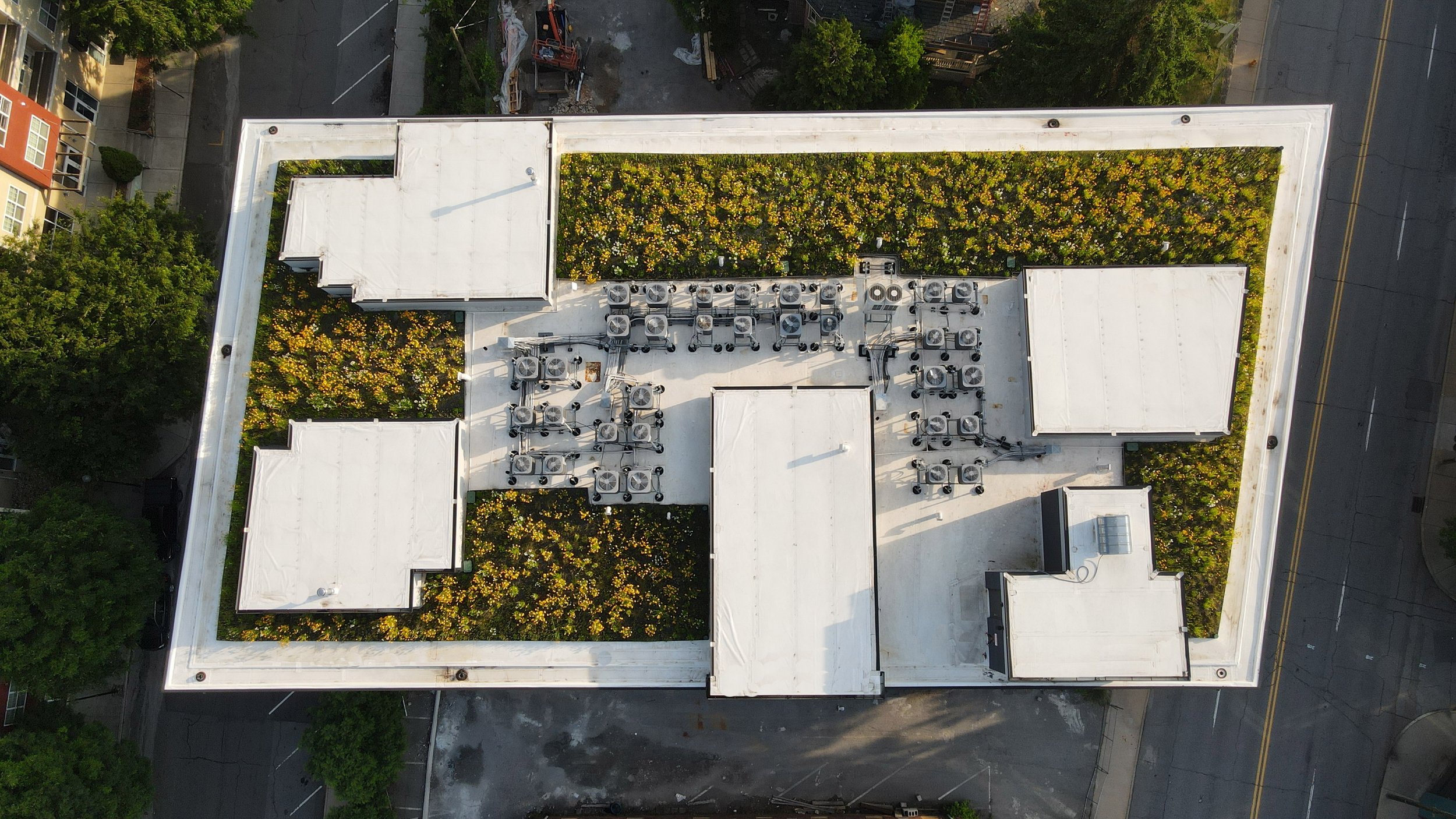
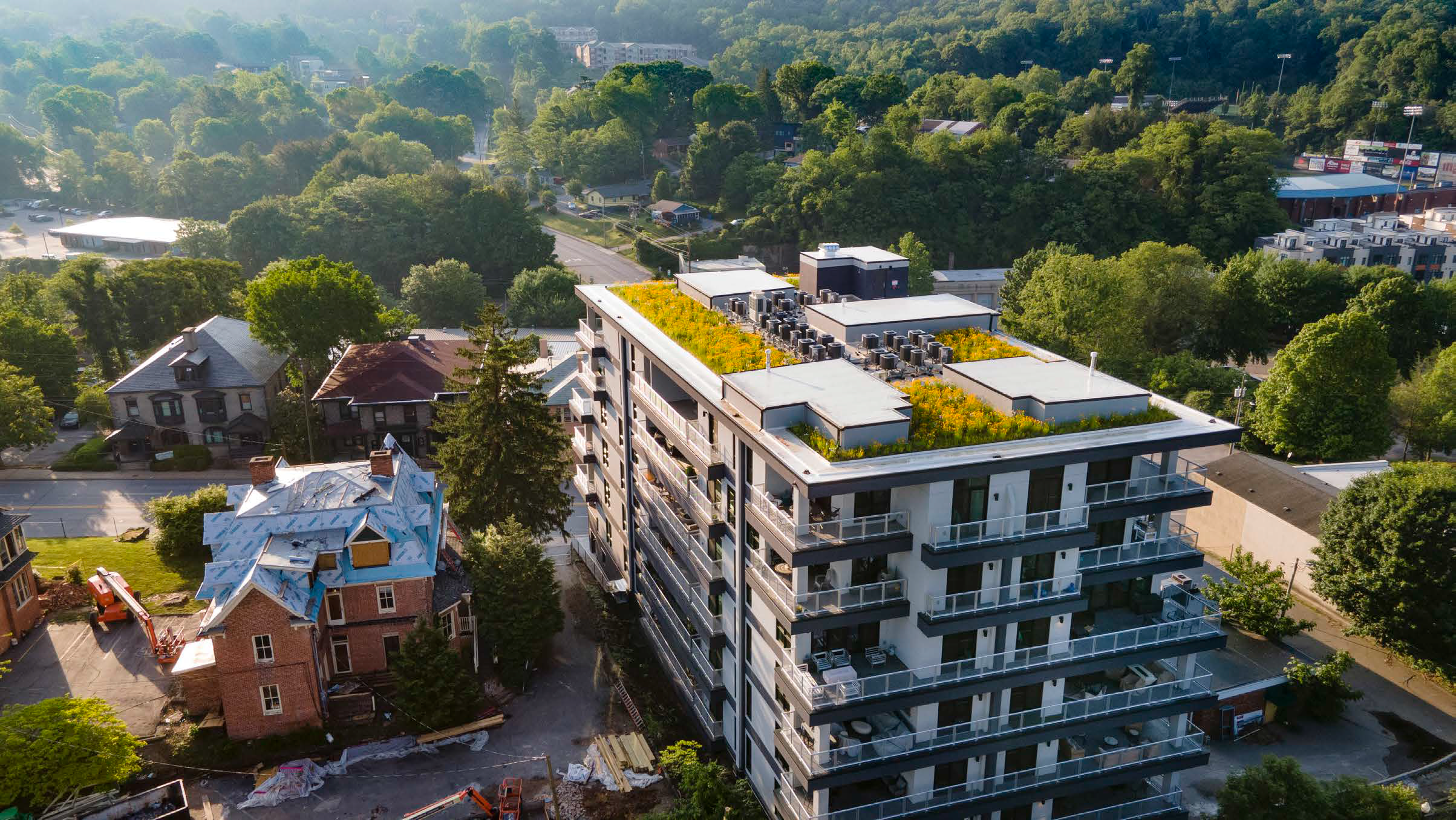
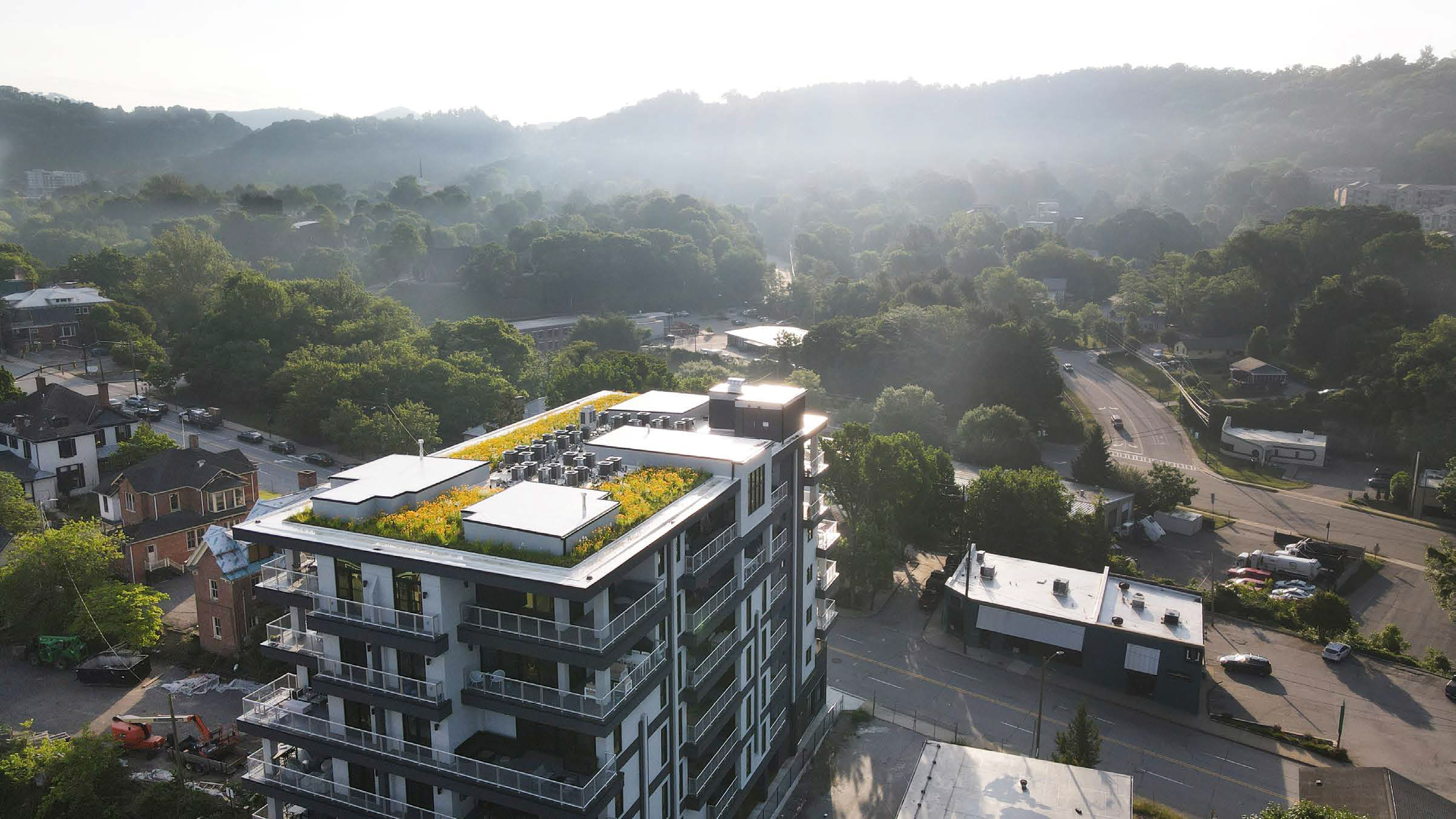
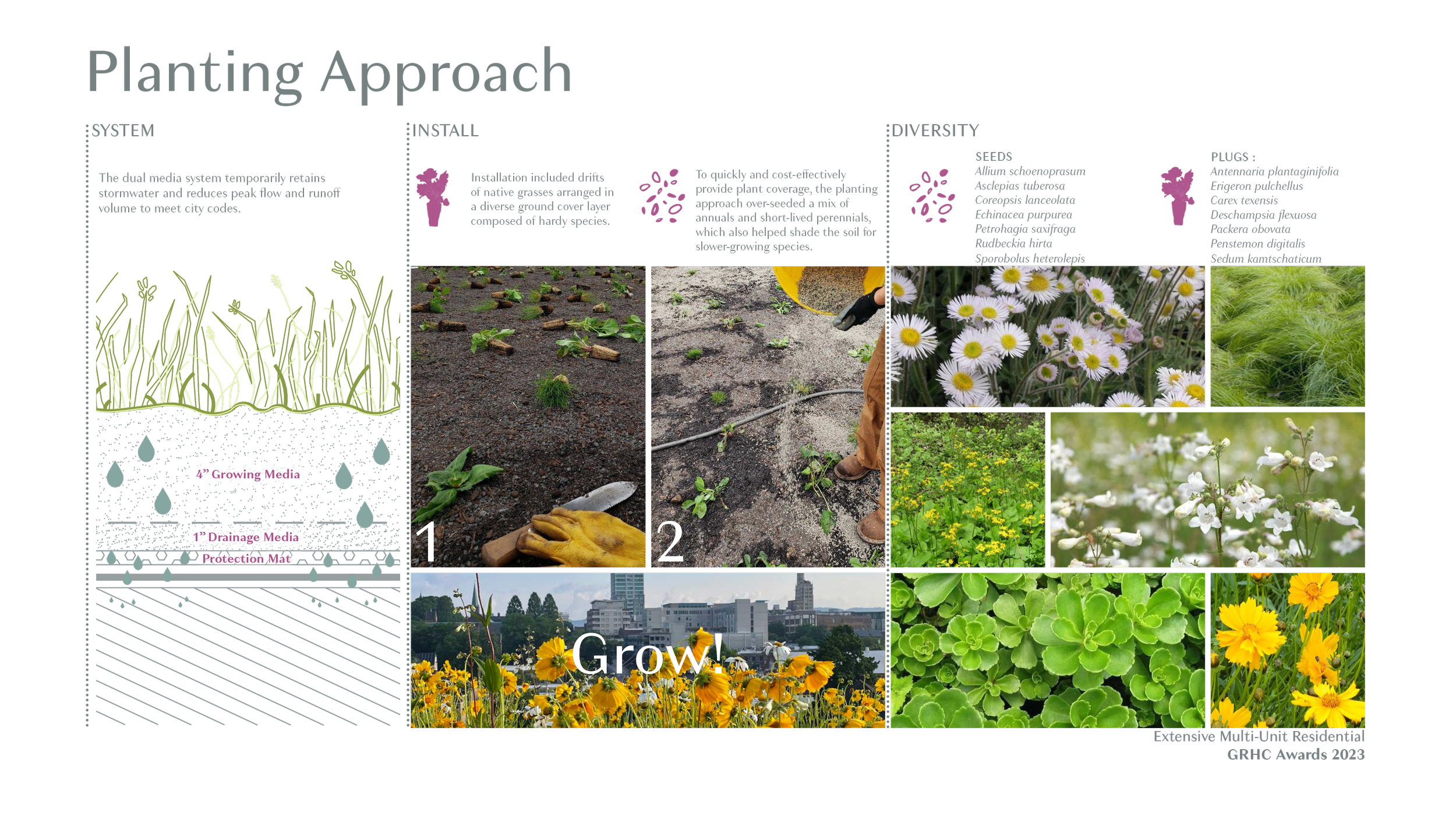
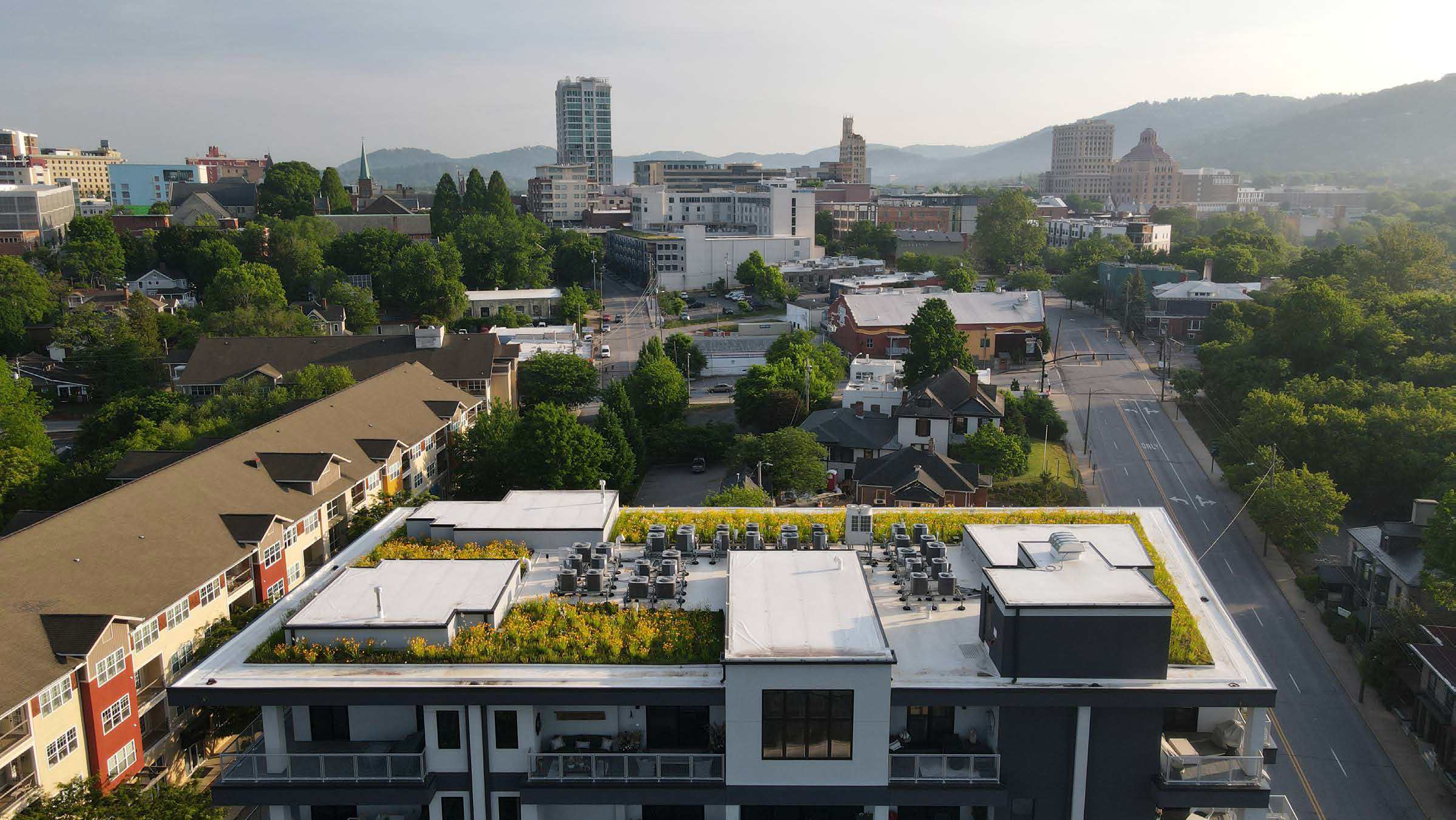
This project was designed to maximize stormwater retention and ease the new building's impact on existing stormwater infrastructure and impaired local waterways. The types of growing media used on this green roof were selected for the quality of their hydrologic performance, and their depths were maximized. The resulting dual-media system performs very well as a stormwater control system. During rain events, the dual-media green roof system retains approximately 4,200 gallons of stormwater, thereby reducing the 2-year design storm runoff volume by an estimated 76%, and reducing the 10-year design storm runoff volume by an estimated 53%. The green roof also temporarily stores stormwater and delays the timing of its release, thereby reducing the 2-year design storm peak runoff rate by an estimated 84%, and the 10-year design storm runoff volume by an estimated 53%.
Through evapotranspiration, the vegetated roof system also prevents approximately 100,000 gallons of water from entering storm drains annually. To promote efficient use of irrigation, a rain sensor system bypasses the irrigation cycle when there is sufficient rainfall.
The landscapes in the surrounding southern Appalachian region are lush with plant life! The region's spectacular ecological and plant communities are an inspiration for discovering plant species that may thrive in the variable microclimates and conditions they will be subject to on a rooftop.
This vegetated roof is a highly diverse pocket of nature in the downtown urban environment. Prior to development, the site was mostly impervious. In addition to improving water quality by reducing stormwater runoff, the green roof supports a resilient assemblage of native and ornamental perennials and grasses that provide critical habitat and connectivity for permanent and migrating pollinators and birds.
The green roof company's maintenance team continues to care for this roof and skillfully manages the plant palette to ensure that it is healthy and operating at a high level through all seasons. This project is frequently used as an example of how a green roof can meet state stormwater requirements, and its ongoing high performance serves as a testimonial for green roofs as nature-based infrastructure.
When managing the plant material on this roof, green roof maintenance technicians closely consider the habitat value for permanent and migratory pollinators and bird species. This means leaving seedheads and winter foliage for food and shelter.
The Judges felt this project was an excellent example of how a custom solution by a thoughtful studio can replace and outperform a more generic commodity style green roof.

